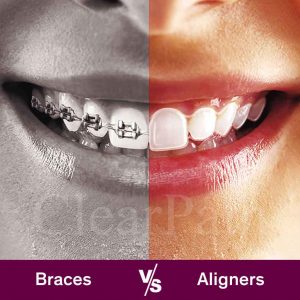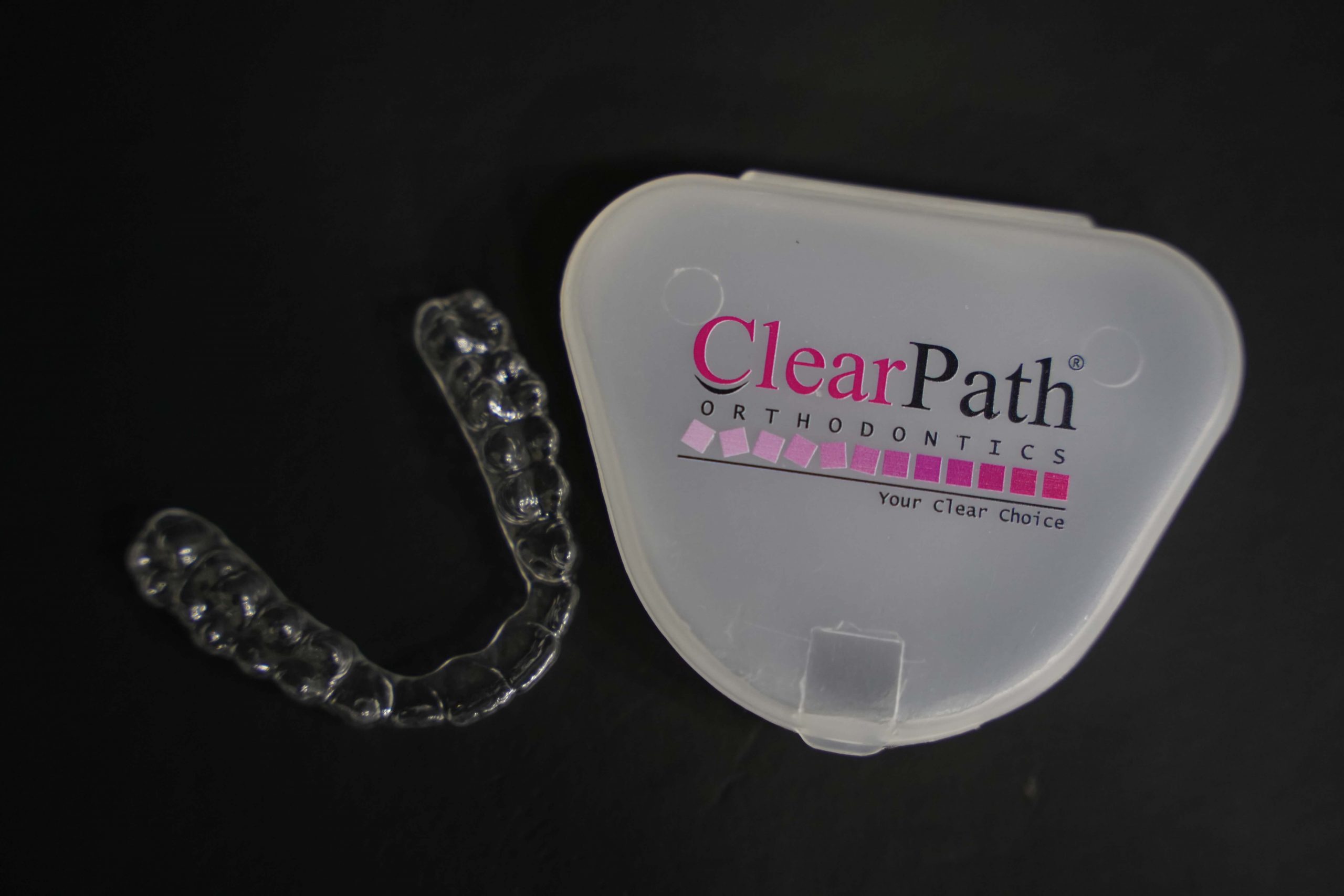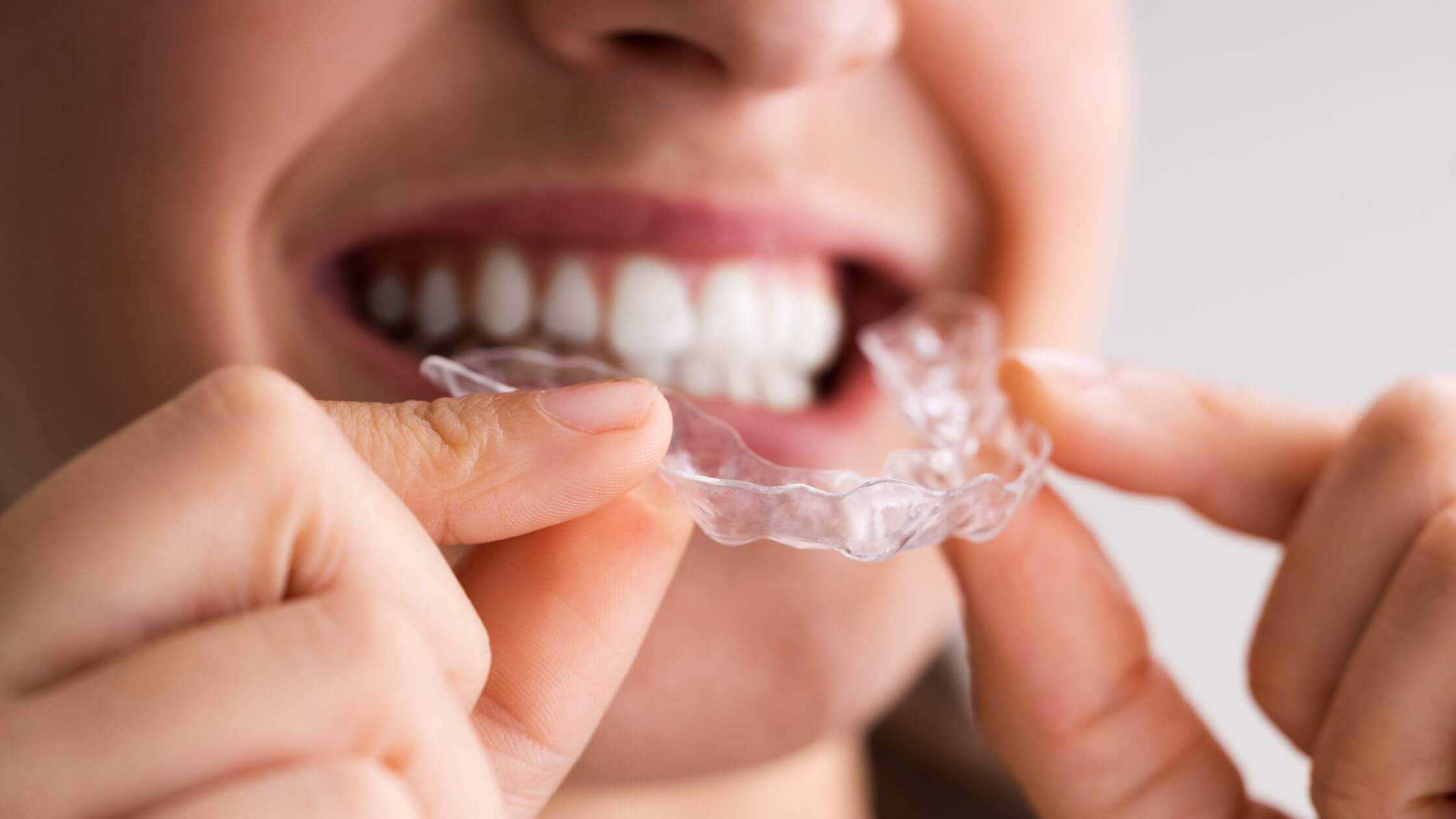Even though Invisalign looks great, many customers still choose braces. Both traditional braces and Invisalign are common orthodontic treatments used to gradually straighten teeth. It can be challenging to determine which method is better because both are FDA-approved devices that produce amazing outcomes. The level of correction required, age, and lifestyle should all be taken into account when deciding between clear aligners and braces.
Ceramic braces are another name for clear braces. The sort of bracket employed is what sets it apart from traditional braces the most. While conventional brackets are made of metal, clear braces use clear brackets. They differ from clear aligners, which feature transparent brackets but reveal the wires, in that they do not. This article explains the value of clear braces over conventional braces. Moreover, we examine everything a consumer needs to know to choose between Invisalign and braces in this article.
How does Invisalign works?
An orthodontic tool used to straighten teeth; one brand of clear aligners is Invisalign. Clear aligners commonly referred to as invisible braces are medical-grade plastic mouthpieces that are built to demand and press on teeth to move them into the proper position. As a discrete replacement for traditional metal braces, clear aligners are available. Customers should evaluate the advantages and disadvantages of Invisalign and traditional braces to decide which is preferable. Consider the advantages and disadvantages of invisible braces in Lahore like Invisalign.
Table of Contents
ToggleBenefits of traditional braces
Despite the number of drawbacks, braces have remained a popular method for straightening teeth. As an alternative, many people are now considering clear aligners. So, here we discuss the list of the advantages and disadvantages of traditional braces.
Uses Complex Corrections
Braces are more effective than clear aligners because they attach to each tooth directly, giving even the most difficult situations a stunning smile.
Many Alternatives to Consider
While metal braces are the least expensive choice, ceramic, and behind-the-teeth (lingual) braces are also available for a more hidden appearance. Wearers can achieve outstanding outcomes without the conventional metal brackets and wires.
Not Removed Easily
Customers are unable to remove braces without an orthodontist’s assistance, in contrast to Invisalign aligners. However, the permanent attachment calls for less responsibility. A mouthpiece does not need to be taken out before eating or left in for at least 20 hours each day. With this basic therapeutic strategy, children, teenagers, and adults may all fare much better.
All Drinks are Safe to Drink
Wearers of braces can enjoy tea, coffee, or other liquids throughout the day without having to remove aligners or possible stain attachments because braces don’t stain and are heat resistant.
Drawbacks of braces Mouth Sensitivity
Metal braces are uncomfortable to wear. They require some getting accustomed to and can result in cuts or irritation around the inside of the mouth.
Appearance
People may notice braces, especially traditional metal braces. On average, lingual braces and ceramic braces are less visible than clear aligners, although they are still more noticeable.
Food Restriction
Gum, bagels, hard candies, popcorn, and other foods may get stuck in the brackets or possibly break the brackets or wires, thus people with braces shouldn’t eat them. A bad food decision can hurt and necessitate visiting an orthodontist.
Frequent Checkups to the Orthodontist
While some users of invisible aligners can manage everything online, braces necessitate frequent orthodontic visits.
Benefits of clear aligners
Appearance
In contrast to traditional metal braces, clear plastic Invisalign aligners are practically invisible from a distance. One of the key reasons why so many people prefer transparent aligners to braces is their modest design.
Comfort
Clear aligners don’t result in the cuts or discomfort that braces can. They also fit flush against teeth. Patients do experience some discomfort when their teeth are realigned, however, Invisalign usually reduces oral discomfort.
Ease of Flossing and Brushing
Users of clear aligners can brush and floss normally after taking off the mouthpiece. No need for the drawn-out and difficult dental care procedure associated with traditional braces.
Foods That Are Hard or Chewy Cause No Harm
Hard and chewy foods, including nuts, popcorn, and bagels should be avoided by people who are wearing braces to prevent damage or irritation. These foods do not need to be avoided, though, as wearing aligners necessitates taking them out before eating.
Fewer visits to the orthodontist
With aligners, some patients won’t require as many visits to the orthodontist as they would with braces. Although this isn’t always the ideal solution for everyone, some online businesses offer consumers clear aligners and no orthodontic visits whereas Invisalign treatments often call for visits every four to six weeks. Customers who are receiving braces therapy must visit the office for every adjustment.
Drawbacks of clear aligner
For Simple Corrections Only
Transparent aligners don’t always work and are usually most effective for persons who just require minor straightening.
Removed for eating
Patients who are using Invisalign trays may only drink water while doing so; nevertheless, they should take them off whenever they are eating or drinking anything else. Due to its softness, food can easily harm plastic. Additionally, users should take the aligners off while consuming hot or colored liquids because the clear plastic warps and stains readily in the heat.
Extra tooth brushing
Invisalign aligners shouldn’t be worn by people with terrible dental hygiene because they can lead to cavities and foul breath. Wearers should make sure to rinse their teeth thoroughly after eating or drinking. Since most people eat throughout the day, using Invisalign may cause daily brushing time to double or triple.
Possibly Requires Visible Attachments
Some people require tiny tooth attachments that act as buttons that link to the clear aligners. An orthodontist must attach and remove these attachments, which assist in controlling tooth movements. Because the attachments are visible through transparent plastic, users who need them could need more consultations than others.











